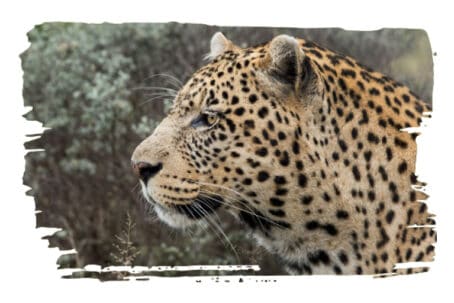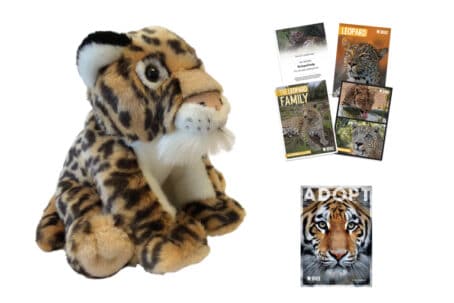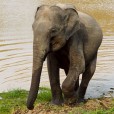
Adopt a Leopard
Try our udopt'r to find the perfect animal adoption for you! >>
Adopt a leopard and receive
- Your own cuddly toy leopard to keep at home
- An adoption pack, including a personalised certificate, animal story, fact sheet and glossy photo to display.
- A copy of Born Free’s bi-annual Adopt magazine with exclusive updates.
udopt'r choice
Leopards can be found in sub-Saharan Africa, in small parts of Western and Central Asia, a small part of Russia, and on the Indian subcontinent to Southeast and East Asia. Despite their large range, they are listed as Vulnerable on the IUCN Red List because leopard populations are threatened by habitat loss.
Leopards, compared to other big cats, have relatively short legs and long bodies. Their fur is marked with rosettes, making them similar in appearance to the South American jaguar, but they are smaller in physique, and the rosettes on their fur are generally smaller. Both leopards and jaguars can have black fur as a colour variant. These are known as black panthers.
udopt it because
- Although these beautiful creatures can be found across Africa, Asia, India and China, their numbers are in decline due to habitat loss, the illegal wildlife trade, trophy hunting and loss of prey.
- According to the IUCN some of the Asian sub species are listed as endangered or critically endangered. They have published that there has been a 30% decline in recent years.
- Funds from your adoption will help care for rescued leopards at Born Free’s big cat sanctuary in Shamwari Private Game Reserve, South Africa. Freed from zoos, and other captive facilities, this sanctuary offers a natural environment where leopards can live out their lives free from harm.
- Adopting a leopard makes for a fantastic gift. Not only will it delight and educate the recipient but funds will go towards Born Free’s critical work.
- Adoption programmes start from as little as £3.00 a month.
Adopt a Leopard Gallery
Delivery information
Did you know?
- Leopards are very strong. For their size they are the strongest of the big cats. They are able to climb trees, even when carrying heavy prey, and often choose to rest on tree branches during the day. One reason why leopards sometimes take their prey up in the trees is to ensure lions or hyenas can’t steal them.
- Leopards are very agile. They can run up to 58km/h and can leap 6m horizontally and 3m vertically. They are also very strong swimmers.
- The leopard is the most elusive of the big cats. They are extremely difficult find in the wild.
- Leopards are mostly solitary animals that have large territories. They usually only allow other leopards to stray in to their territory for mating. They mark their ranges with urine and leave claw marks on trees to warn others to stay away.
- Leopards tend to have two or three cubs per gestation. Mothers refrain from wandering their territories after giving birth until their young are capable to come with them. Cubs suckle for around 3 months and are kept hidden for about the first 8 weeks to protect them from predators









